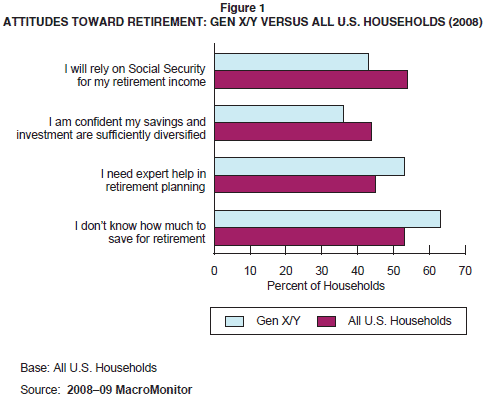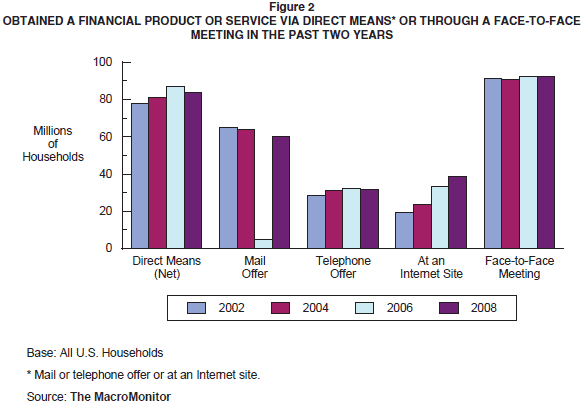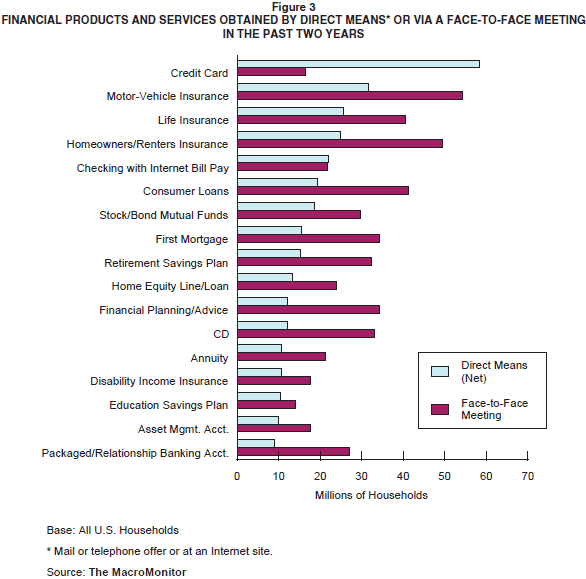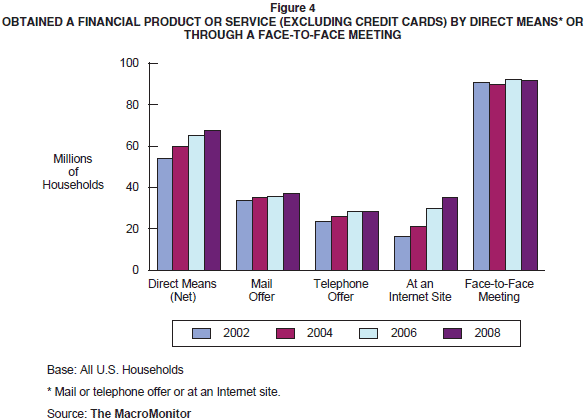MacroMonitor Market Trends December 2008
MacroMonitor Market Trends highlights topical news and trends of interest to you and your colleagues. If you would like more information about the items in the newsletter or would like to discuss other ways that we can assist you in your research and marketing efforts, please contact us.
In this issue:
Released: The 2008–09 MacroMonitor Data!
The Consumer Financial Decisions (CFD) team is excited to announce the release of the 2008–09 MacroMonitor data. In these extremely uncertain times for consumers and financial marketers, we are excited to have a solid measure of consumers' financial attitudes and behaviors. The fielding period for the MacroMonitor was from mid-April to early September 2008—before the complete meltdown of the financial markets. This measurement gives us a clear picture of households in the midst of financial turmoil and uncertainty—a picture from before panic overtook the marketplace. This snapshot is, indeed, one of the most important that we have taken in 30 years.
The MacroMonitor is the key to understanding consumers in terms of their attitudes toward risk, product use, retirement, real estate, credit, saving and investing, information and advice, and channel preference. The MacroMonitor is also the key to identifying the many financial trade-offs that consumers face, and it presents a holistic view of how consumers conduct their financial affairs. And, because we field the MacroMonitor consistently every two years, we can identify how consumers have changed in the past few (or 15!) years. Please contact us with any research requests or questions about the new data.
Planning for Retirement Gaining Importance for Gen X/Y
Although for many Gen X/Y households retirement may seem light-years away, slowly but surely this young cohort has begun to tackle the increasingly difficult task of saving for it. According to 2008–09 MacroMonitor data, 73% of Gen X/Y households indicate that providing for retirement is a specific goal for their savings and investments; 26% claim it as their most important goal. Although the incidence of Gen X/Y households' owning a retirement account in 2008 (about 60%) remains unchanged from incidences in previous years, their ownership of salary-reduction plans (SRPs)—including 401(k), Roth 401(k), 403(b), and 457 plans—increased significantly from 2006 to 2008. More than half of Gen X/Yers (53%) now own an SRP: 5 million more households than did so in 2006.
Saddled with more debt than that of any generational cohort that preceded them, Gen X/Y households provide a unique opportunity for financial-services providers to step in and help them take the first steps toward planning for retirement. The daunting prospect of a Social Security failure in the future is not lost on this young cohort. As Figure 1 indicates, only four in ten Gen X/Yers plan to rely on Social Security for their retirement income, in comparison with 54% of all U.S. households. Unfortunately, their confidence in their ability to save for retirement is quite low. Just 36% of Gen X/Yers—in comparison with 44% of households overall—are confident that their savings and investments are sufficiently diversified, and nearly six in ten admit to not knowing how much to save for retirement. Gen X/Yers are also significantly more likely to admit to needing expert help with retirement planning (53%, versus 45% of all U.S. households). Thus, now more than ever, financial institutions have an opportunity to capitalize on Gen X/Ys' need and desire for retirement planning and advice. By creating relationships with this up-and-coming cohort early on, financial-services providers can help Gen X/Yers prepare for and meet their future financial needs.

Whither Direct Marketing?
Since 2002, the number of households that obtained a financial product or service through direct means (as a result of a mail or telephone offer or over the Internet) increased through 2006 but actually declined between 2006 and 2008. (We asked respondents to indicate which of 17 financial products or services they had obtained in the past two years as a result of a mail or telephone offer, from an Internet site, or through a face-to-face meeting.) During the same period—2002–08—the number of households that obtained a financial product in person (through a face-to-face meeting) is and remains significantly higher than the number that obtained one directly. Expectedly, however, the number of households that obtained a financial product or service via the Internet increased throughout the past eight years. The decline in the overall number of households that obtained a product or service via direct means is attributable to the drop in households' obtaining a product or service as a result of a mail offer.

The success of the Internet as a means to market financial products and services is well known. A huge difference exists, however, between the number of households that obtained a financial product or service via the Internet and the number that obtained one as a result of a direct mail offer. And an even larger difference exists between the number of households using either of these methods to obtain a financial product or service and the number using a face-to-face meeting. Figure 3 shows that, by a margin of two to one, significantly more households recently obtained a credit card via direct means than obtained any other financial product (motor-vehicle insurance being second). However, more interestingly, greater numbers of households recently obtained each other type of financial product or service in person than did so as a result of a direct marketing offer or via the Internet. One exception exists: About the same number of households obtained a checking account with Internet access recently via a mail or telephone offer or over the Internet as obtained one in person!

Because obtaining a credit card by direct means is so much more acceptable to households than obtaining any other financial product or service by direct means, we next look at the long-term trend of obtaining any financial product or service (excluding credit cards) by direct means in comparison with the long-term trend of obtaining any product or service in person. In Figure 4 we see that the trend in the number of households that obtained any financial product or service (excluding credit cards) via direct means has climbed steadily from 2002 to 2008. We also see that the numbers of households that have obtained a product or service via each of the three types of direct means also have trended up during the same eight-year period. Here, as in Figure 3, we see that the number of households that used the Internet to obtain a financial product or service from 2002 to 2008 trended upward at a faster pace than the number of households that obtained a product or service via either a mail offer or a telephone offer during the same time frame. However, by excluding credit cards from the mix, we now see that considerably fewer households have obtained any financial product or service through any direct means than have obtained any product or service in person. Looking at the trends of the three direct means separately, we can see that the decline in the trend for direct means overall is attributable to a drop in the number of households that have purchased a product or service through a mail offer.

Now, it may come as no surprise that marketing credit cards using direct mail is the major driver for the relative balance that exists between the direct-versus–in-person marketing of financial products. However, if a marked decline exists in the extension of credit in the United States, particularly in the offering of credit cards, the implication is that the majority of households will be more likely to obtain (or continue to obtain) their other financial services through personal interactions. In spite of the rapid increase in the successful use of the Internet to market financial products and services, old-fashioned brick-and-mortar and face-to-face interactions are responsible for the successful marketing of a greater number of financial products and services than is direct marketing. Given the uncertainties of the current economic situation, given consumers' striving to gain control over their finances and live within their means (and maybe even save a little), and given financial providers' cutting back on the extension (and marketing) of credit, it is important to remember that consumers obtain the majority of their financial products and services through face-to-face contacts.